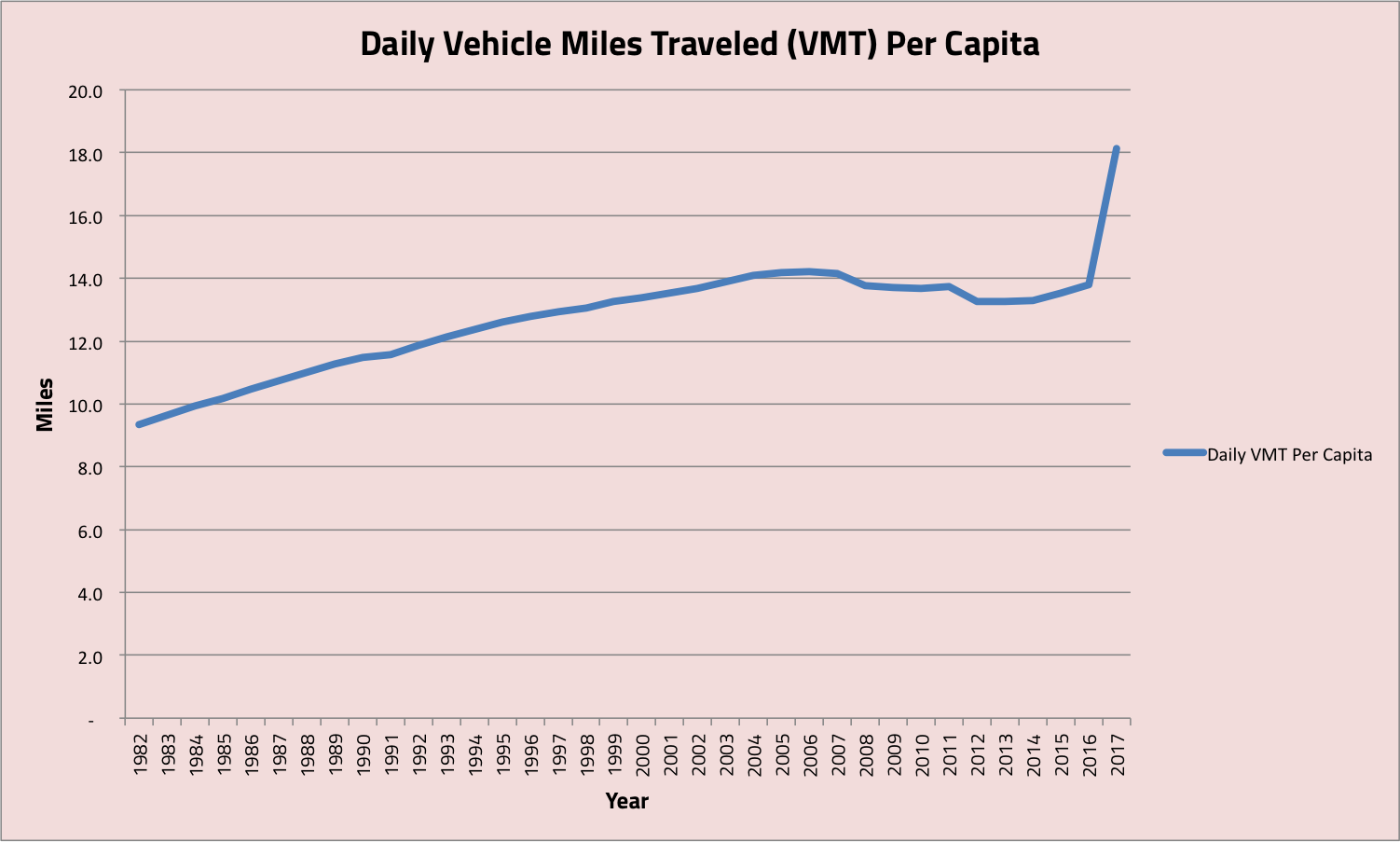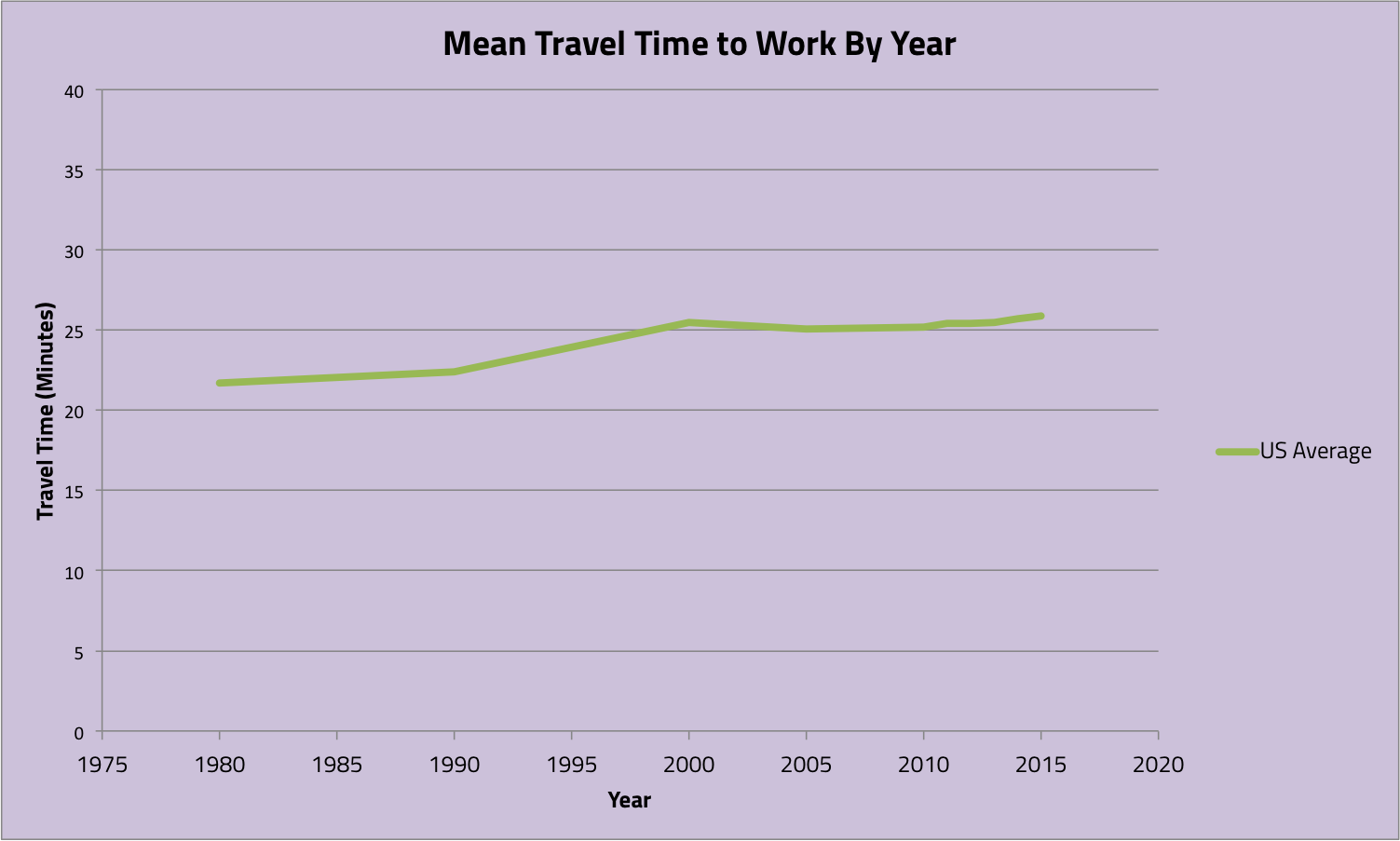The Mobility Trap: Why We'll Never Fix Congestion by Speeding Up Traffic
Is it, though?
It's baaaaaaaack: the zombie study that won't die. After a four-year reprieve, the Texas Transportation Institute (TTI) has once again published its infamous Urban Mobility Report. So if you're seeing a spate of headlines about how the traffic is bad and getting worse, coupled with outrageous dollar amounts that Americans supposedly lose to congestion—like $166 billion in 2017—the source of those claims is almost certainly the TTI report.
This report is pure propaganda for the road-building industry, designed to elicit credulous takes from major news outlets that cement in the public's mind the idea that We Need to Spend More On Infrastructure™. It inflates the cost of congestion in a dozen different ways, by making unreasonable assumptions that don't reflect the real world. It has been debunked repeatedly by a range of transportation policy experts, and yet it just. Keeps. Coming. Back. And without addressing any of the substantive criticisms.
If you want to read some of those substantive criticisms, those smarter than I have already done a great job enumerating them. Here are a couple good links:
City Observatory: The Top Twenty Reasons to Ignore TTI’s Latest Urban Mobility Report
Victoria Transport Policy Institute, for the hardcore policy / econ wonks in the crowd: Congestion Costing Critique: Critical Evaluation of the “Urban Mobility Report”
Glaring problems with the report include that it assigns the value of time lost sitting in traffic based on prevailing wages, which is a nonsensical practice to economists: the alternative to losing 6 minutes on your commute is virtually never that you could have otherwise earned 6 additional minutes of pay at your job. And very rarely would anyone be willing to spend 6 minutes worth of their wages (say, on an express toll lane) to avoid that congestion—turns out this has been studied and people will pay, on average, more like $3 an hour, or well under minimum wage.
Another error: the study defines “delay” (congestion incurring a cost) as any time vehicles are moving less than free-flow speed. But on some roads, the free-flow speed is actually greater than the legal speed limit. Drivers simply obeying the law are counted by the TTI as evidence of congestion.
The glaring errors in the report go uncorrected because correcting them would defeat the report’s purpose, which is to make congestion look bad and always worsening. Because others have done such a thorough job deconstructing the report's definitions and assumptions, though, I'm going to attack it from a more root philosophical angle that helps explain why this report is asking and answering the wrong questions.
The Disastrous Assumption at the Heart of the UMR (and Our Prevailing Transportation Policy): That “Mobility" is Our Goal
It's right there in the title of the report: "mobility." This is assumed to be the goal of our transportation system—to move people. Sounds reasonable and obvious enough.
Accordingly, the way the authors measure traffic congestion is in "delay." This also sounds reasonable on its face: on a congested freeway, you travel more slowly, get to your destination later, and those are minutes lost that you could have spent doing things you value. Ergo, congestion delay is costly for society, according to the TTI.
All of this is intuitive to ordinary people, which is why the TTI has no trouble getting their findings parroted in the press without much critical analysis. The problem with it is that it’s wrong. It ignores how we actually make transportation decisions in the grand scheme of our lives.
The Oxford English Dictionary defines mobility as "the ability to move or be moved freely and easily." Is that ability valuable to us in its own right? Generally no. What we value is the stuff that mobility helps us access. Your job. Your kids' school. Your church. Your doctor. The grocery store. Friends' houses.
We arrange our lives to have as much access as we can manage to the things we value. And we do that with a sort of travel time budget in mind: how much time we're willing to spend in transit in a typical day. It might vary for individuals, or in different contexts, but there's an average range. Few if any of us object to spending 20-30 minutes of our weekday just moving from place to place. That's just life. But virtually none of us wants to spend 3 hours of our weekday just moving from place to place. It's why few people are willing to live in Hartford, CT or Allentown, PA and commute to New York City, even though housing is several times cheaper in those cities.
Mobility is the answer to "How far can you get?" from a given location in a given time. The answer to the question, "What can you get to?" in that time is called accessibility, and is a better way to think about the actual value of transportation.
For decades, we've oriented our transportation spending toward mobility—making it easier for people to travel longer distances at higher speeds. And the results are evident in the contrast between these two graphs:
Travel time has barely budged: almost everywhere in the U.S., the average commute is between 20 and 30 minutes. This is true whether you're in a huge city or a smaller one, a spread-out one or a dense one, a congested one or a relatively uncongested one. It's true because most people's travel time budget is 20 to 30 minutes for a one-way commute, and that budget is going to inform decisions about where they live, work, and go about the rest of their lives.
Travel distance, on the other hand? On average, we drove almost twice as far each day in 2017 as we did as recently as 1982.
So what do we achieve by building new highways and speeding up travel? We don't actually shorten people's trips; we just enable them to live and work farther away from each other. The results are reflected in the VMT statistics: we drive far more miles than we did a single generation ago. We burn more fossil fuels. We develop more farmland. But it's worse than that: when we prize the ability to go places quickly over the actual value to us of the places we're going, we end up destroying our cities.
Here's a map from Rise Collaborative of metropolitan Buffalo, New York's physical growth from 1950 to 2010: a staggering tripling of the developed land area with zero net population growth, just the same number of people taking up three times as much space.
If you were a middle-class resident of Buffalo in 1940, you likely lived in what's now an inner-city neighborhood, and you had neighborhood grocers, banks, a drugstore: you had much of the stuff of day-to-day life within a 10-20 minute trip without a car.
By 1980, those same inner-city neighborhoods were in free fall. Rust Belt deindustrialization has ravaged the economy, and, enabled by freeways, a large share of the region's middle class residents have left for nicer digs in the suburbs. They hop on the freeway, and a lot of the stuff of life is still within a 10-20 minute trip—just farther away, at higher speed.
Meanwhile, many of the corner groceries and drugstores in Buffalo proper have closed, and much of the city is a depopulated food desert where it's harder to meet basic needs than it used to be. Most jobs that aren't downtown are in the suburbs by this point. If you've got a car, you can drive out to the suburbs or to wealthier neighborhoods to get what you need. If you don't, you're isolated. Your mobility hasn't changed, but your accessibility is down the drain.
“When we prize the ability to go places quickly over the actual value of the places we’re going, we end up destroying our cities.”
If mobility itself is the goal—uncongested travel at free-flow speeds—then this looks like a win: Buffalo is not a very congested place. It's built its way out of congestion. You used to get around Buffalo at 15 miles per hour. Now you get around Buffalo at 60 miles per hour. But is there any more Buffalo to get to than there used to be? No. There's arguably less.
Fast-growing cities in the Sunbelt exhibit the same dynamic with regard to mobility: rapid growth in miles driven, rapid horizontal expansion, hollowing out of inner neighborhoods. The only difference is their growth rate means they haven't been able to build themselves out of congestion. Atlanta used to have a vast network of streetcars and thriving inner neighborhoods with a complete suite of amenities that neighbors could walk to. Now, Atlanta has a vast network of clogged freeways serving suburbs that are facing a looming catastrophe of debt and overbuilt infrastructure.
Is this an improvement in mobility? Would more freeways help, or would they just turbocharge the next generation of suburban expansion, and keep that Vehicle Miles Traveled statistic ticking upward?
It's Not Where You Can Go, It's What You Can Get To
Let's reframe the mobility debate by making this observation: The theoretical demand for mobility is infinite. We can always travel more miles at higher speeds to reach the same stuff—family, friends, jobs, dining, shopping—if technology and cheap energy enable us to keep spreading out. Heck, some of us might commute to the moon if we could.
A sensible transportation policy must treat mobility as only a means to an end: the end of getting to useful stuff. Treating mobility as an end in itself results in an insane end game.
Propaganda like the TTI Urban Mobility Report tells us that our biggest problem with transportation in the US today is that we can't go as fast as we'd like to go. That's wrong. Our biggest problem is getting to the stuff we want to get to. And the best, most affordable, practical, resilient solution to this, is to bring the stuff closer to us. In the process, we'll build strong places that are largely immune to dire problems with congestion or the costs of travel.
The best transportation policy there is isn't HOV express lanes, diverging diamond interchanges, or a new or wider freeway on the rapidly-expanding edge of your city. The best transportation policy there is just might be a new corner grocery store in your own neighborhood.


